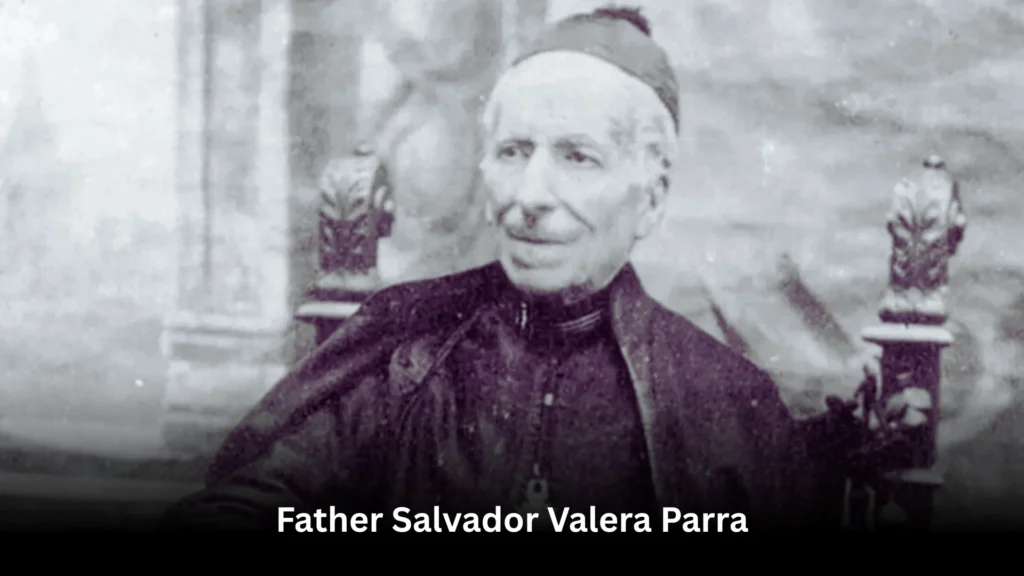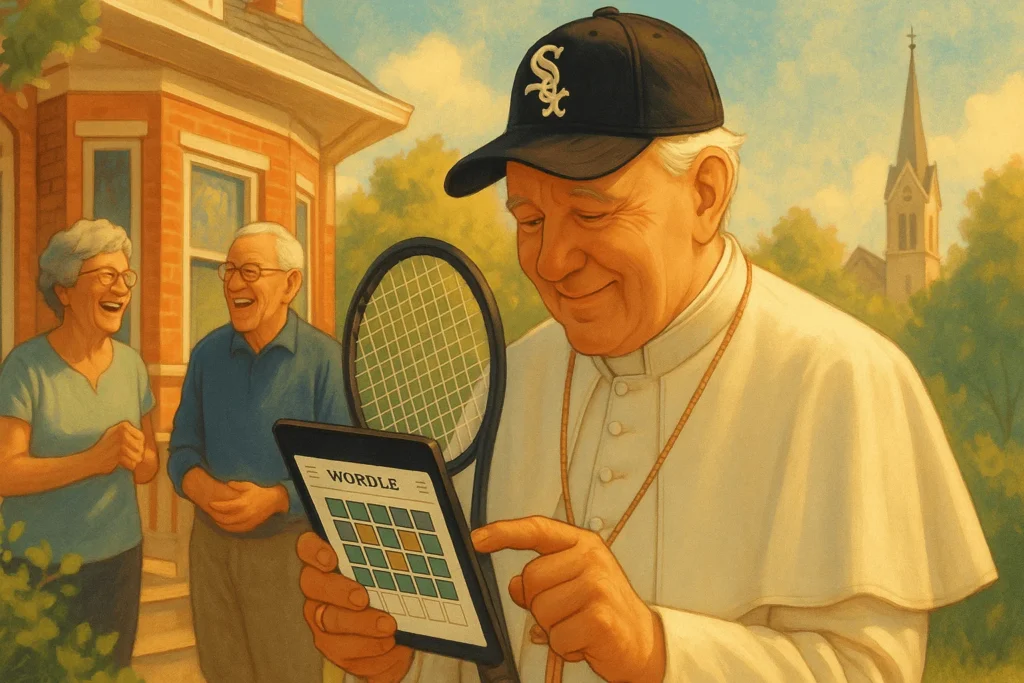Pope Leo XIV’s First Miracle: A Miraculous Moment That Defied the Odds
In 2007, a Rhode Island hospital room became the stage for an extraordinary event that would echo across the globe, reaching the hallowed halls of the Vatican. A premature baby, born with no detectable pulse and fading fast, was saved in a way that medical science couldn’t explain. This week, Pope Leo XIV, the first American pontiff, declared this event his first official miracle, attributing it to the intercession of a 19th-century Spanish priest, Father Salvador Valera Parra. This declaration not only marks a historic moment for the Catholic Church but also sets Valera Parra on a path toward sainthood. How did a humble priest from a small Spanish town become linked to a miracle thousands of miles away? Let’s dive into the five key facts that make this story so compelling.
What Happened in Rhode Island in 2007?
A Desperate Situation
At Memorial Hospital in Pawtucket, Rhode Island, a baby named Tyquan Hall was born prematurely via emergency cesarean section in 2007. The situation was dire: Tyquan had no detectable pulse, his skin was pale and turning blue, and he suffered from severe oxygen deprivation. For over an hour, hospital staff followed neonatal resuscitation protocols, but there was no improvement. Doctors braced for the worst, expecting either death or severe neurological damage if the infant survived.
A Prayer That Changed Everything
Spanish-born doctor Dr. Juan Sanchez, who was a follower of Father Salvador Valera Parra, was at a loss. With medical options exhausted, he turned to prayer, invoking the name of Valera Parra, the patron of his hometown, Huércal-Overa, Spain. According to hospital staff and Vatican reports, moments after Sanchez’s prayer, Tyquan’s heart began to beat normally—without any medical intervention. This sudden, inexplicable recovery stunned the medical team.
A Child Who Defied Expectations
Doctors expected Tyquan to face lifelong challenges due to the prolonged lack of oxygen. Yet, against all odds, he thrived. By 18 months, he was speaking; by two years, he was walking. Today, Tyquan leads a normal life, playing sports and showing no signs of impairment. This is the first officially acknowledged miracle in Rhode Island’s history, and the Vatican has referred to it as a “living testament to the power of faith.”
Who Was Father Salvador Valera Parra?
A Humble Priest’s Life

Salvador cohomology Parra was born in Huércal-Overa, Spain, in 1816, and led a modest life of devotion. As a diocesan priest, archpriest, and parish priest in his hometown, he was known for his compassion, particularly during crises. In the 1850s and 1860s, he worked tirelessly to aid victims of cholera epidemics and earthquakes, earning the admiration of his community. In 1885, he played a key role in founding a care home for the elderly, collaborating with Saint Teresa Jornet. Valera Parra died in 1889, leaving no record of miracles during his lifetime—until now.
A Local Hero with Global Impact
What makes this story remarkable is that Valera Parra never set foot in the United States, let alone Rhode Island. As Rev. Timothy Reilly of the Diocese of Providence noted, “The cool thing is, the more you think about the miracle itself, Father Valera lived in the 19th century. He never came to the U.S. Never came to Rhode Island. And yet… the doctor called out and called upon his name… he decided to intervene.” This transatlantic connection underscores the universal reach of faith, linking a small Spanish town to a modern American hospital.
Why Is This Miracle Significant for Pope Leo XIV?
A Historic First for the First American Pope
Pope Leo XIV, born Robert Prevost in Chicago, made history as the first American and Peruvian citizen to lead the Catholic Church. Elected on May 8, 2025, following the death of Pope Francis, the 69-year-old pontiff brings a unique perspective, shaped by his time as a missionary in Peru and his role overseeing the Vatican’s office of bishops. This is the first miracle he has declared during his pontificate, which is a major turning point.
A Vision for Modern Sainthood
The recognition of Valera Parra’s miracle aligns with Pope Leo XIV’s broader vision for sainthood in the 21st century. Alongside this declaration, the Vatican is advancing the canonization of Carlos Acutis, a British-born teenager who died in 2007 and is poised to become the first Millennial saint. Acutis, who is well-known for his website that lists Eucharistic miracles, embodies holiness in a contemporary way by fusing technology and faith. By championing both a 19th-century priest and a tech-savvy teen, Pope Leo XIV is signaling an inclusive approach to sainthood that resonates with diverse generations.
How Does a Miracle Get Vatican Approval?
A Rigorous Investigation Process
The path to declaring a miracle is meticulous. More than ten years ago, in 2014, a bishop from Valera Parra’s home country of Spain sent investigators to Rhode Island to look into Tyquan’s recovery. To exclude out any natural explanation, the Vatican’s Dicastery for the Causes of Saints reviewed theology, spoke with witnesses, and looked at medical records. The sudden restoration of Tyquan’s heartbeat, coupled with his full recovery, met the Vatican’s strict criteria for a miracle.
The Road to Sainthood
For Valera Parra, this miracle paves the way for beatification, the final step before canonization. One more confirmed miracle is required for him to be declared a saint. The process underscores the Catholic Church’s commitment to verifying divine intervention, ensuring that only the most extraordinary cases are recognized. Rev. Timothy Reilly celebrated the milestone, stating, “We are thrilled that this recognition will move the cause of beatification and canonization forward for Venerable Servant of God Salvador Valera Parra.”
What Does This Mean for Rhode Island and Beyond?
A First for the Ocean State
This miracle is not just a spiritual triumph but a historic first for Rhode Island, marking the state’s only Vatican-approved miracle. The event has sparked local pride, with Providence parishioner Clare Bradley noting, “It shows God’s presence and that he’s really working here.” The story of Tyquan’s recovery has become a beacon of hope, reminding believers of the power of prayer in the face of despair.
A Global Message of Faith
The miracle’s significance extends far beyond Rhode Island. It highlights the enduring relevance of faith in a modern, science-driven world. The story of a Spanish priest aiding a child in America through a doctor’s prayer resonates with Catholics worldwide, reinforcing the idea that divine intervention knows no boundaries. As the Vatican continues to investigate Valera Parra’s life and legacy, this miracle could inspire new devotees in unexpected places.
The Human Side of Pope Leo XIV
A Relatable Pontiff

This important pronouncement is made more relatable by Pope Leo XIV’s personal narrative. Known for his calm intellect and deep spirituality, he’s also a White Sox fan who enjoys playing tennis and solving Wordle puzzles with his siblings back in Illinois. These glimpses into his life make him a uniquely approachable figure, bridging the gap between the papacy and everyday believers. His decision to recognize this miracle reflects his commitment to celebrating faith in all its forms, from the extraordinary to the ordinary.
A Legacy in the Making
As the first American pope, Leo XIV is carving out a legacy that blends tradition with modernity. His recognition of miracles like Tyquan’s and his support for figures like Carlos Acutis show a forward-thinking approach to leadership. By honoring a 19th-century priest and a 21st-century teen, he’s building a bridge between the past and the future of the Catholic Church.
Why This Story Matters Now
A Timely Reminder of Hope
In a world often marked by uncertainty, the story of Tyquan’s recovery offers a powerful reminder of hope and resilience. The fact that a prayer to a little-known priest could lead to such an outcome challenges skeptics and inspires believers. This miracle, declared on July 18, 2025, comes at a time when stories of faith and healing resonate deeply, offering comfort in turbulent times.
A Call to Share and Reflect
This story is one to share—whether you’re a person of faith or simply moved by the idea of a life saved against all odds. It invites reflection on the mysteries that science can’t always explain and the connections that transcend time and place. As Valera Parra’s cause for sainthood moves forward, this miracle will continue to spark conversations about the role of faith in our lives.
Conclusion: A Miracle That Connects Us All
The declaration of Pope Leo XIV’s first miracle is more than a religious milestone—it’s a story of human connection, faith, and the unexpected. From a Rhode Island hospital to a Spanish village, from a 19th-century priest to a modern-day pope, this event weaves together threads of history, culture, and spirituality. As Father Salvador Valera Parra’s name gains new prominence, and as Tyquan Hall continues to thrive, this miracle serves as a testament to the enduring power of belief. What’s next for Valera Parra’s sainthood journey? Only time—and perhaps another miracle—will tell.


